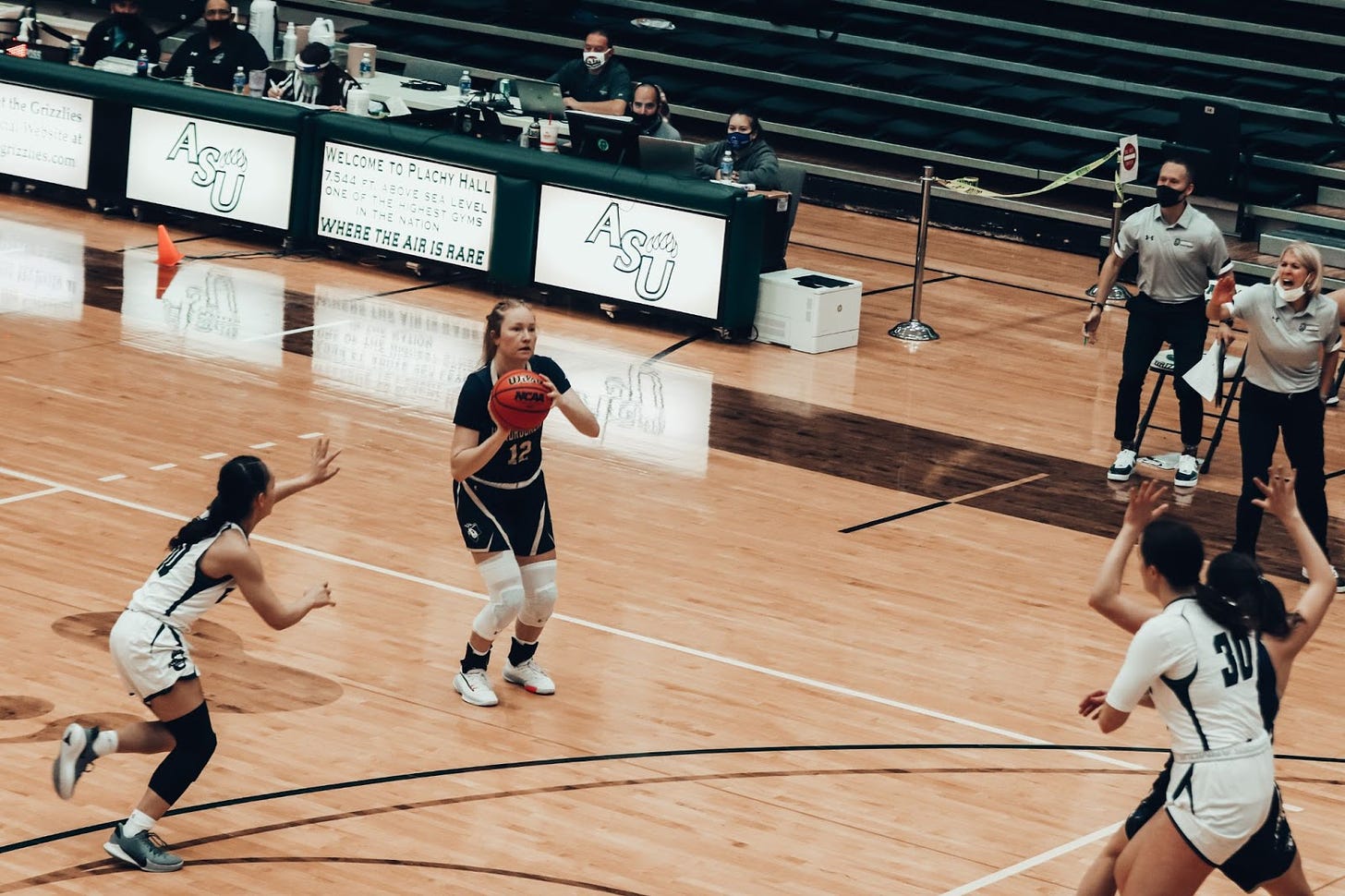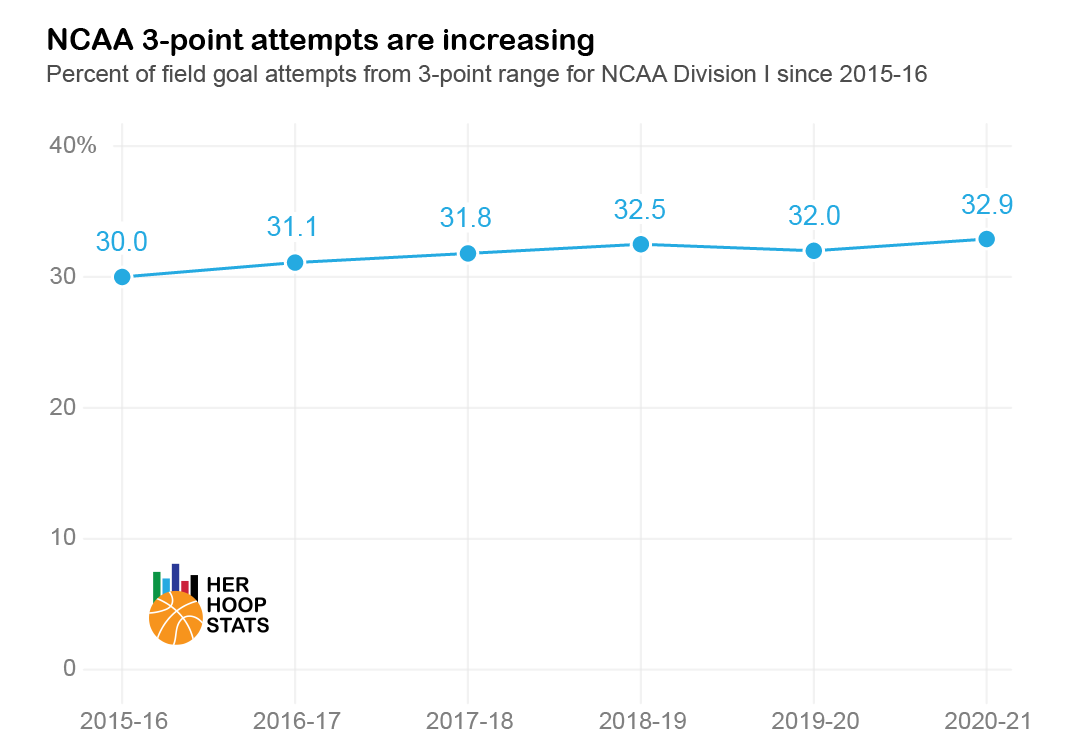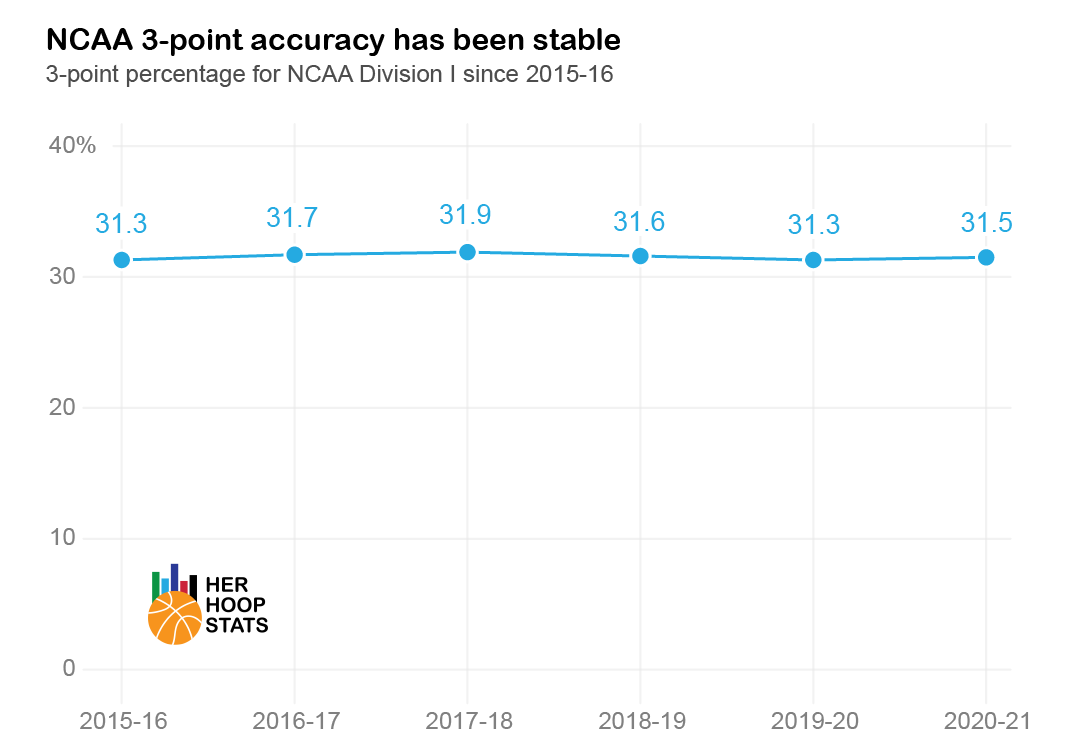The NCAA Is Moving the Three-Point Line. What Will Be the Impact Next Season?
Thanks for reading the Her Hoop Stats Newsletter. If you like our work, be sure to check out our stats site, our podcast, and our social media accounts on Twitter, Facebook, and Instagram. You can also buy Her Hoop Stats gear, such as laptop stickers, mugs, and shirts!
Last Thursday, the NCAA Playing Rules Oversight Committee approved moving the women’s three-point line to 22' 1.75" from the current 20' 9" for the upcoming 2021-22 season for all divisions. This change aligns the distance of a three-point attempt with the WNBA and the international line. NCAA Division I Men’s Basketball went through the same change for their 2019-20 season.
There’s no question that three-pointers have become a bigger part of the women’s game each year. From 2015-16 to last season, the percentage of shots that were from behind the arc has increased from 30.0% to 32.9% for NCAA Division I women. That’s a 2.9% difference on an absolute basis and a 9.7% increase over the past six seasons.
While the number of three-point attempts has increased over time, the accuracy has been relatively stable. On the whole, women have averaged anywhere from 31.3% to 31.9% over that period, a relatively tight range. Last season, Division I players made 31.5% of their threes.
With the NCAA moving the line back, we wondered here at Her Hoop Stats whether it would be possible to make a back-of-the-envelope estimate as to what would happen next year. Will the trend of increasing threes come to a halt as the shot becomes slightly harder? Will accuracy drop off?
To answer these questions, we first asked what data is available to us to inform our calculation. As we said above, NCAA Division I Men’s Basketball underwent the same change two years ago. The WNBA extended their line to the current distance for the 2013 season. We can learn from what happened in those leagues to form our expectations for next year.
As the table below shows, the college men saw the percentage of shots from behind the arc decline in the first season by 1.19% on an absolute basis. The WNBA line changed by a slightly longer distance (19.5") for the 2013 season and they experienced a much bigger impact in their numbers.
So, given those two benchmarks, how big a change should we expect next year? The team suspects that the answer probably lies between the NCAAM data point and the WNBA data point, but much closer to the NCAAM data point. The game has definitely changed significantly since 2013. Additionally, the WNBA had 144 players score a point in 2013 while the NCAAM had approximately 4,500 players who scored in 2019-20, a number far closer to the NCAAW who had 4,200 players score in 2020-21. Presumably, there is a similar distribution of talent between that number of men and women college players. Of course, the men were taking more threes and hitting more as well, so the situation is not identical.
The line change will also simplify the game for the women. For the past two seasons, there have been multiple lines on the court due to the differing rules for the men and the women. As a rising senior on the South Dakota Mines women’s basketball team in Division II, I often elected to shoot from beyond the farthest line rather than take the time to look down and check which line I was behind. It’s probably not a coincidence that in 2019-20 and 2020-21 three-point accuracy was down slightly as I’m sure many Division I players made the same choice. Another bonus is that having just one line on the court now will help referees to more easily make quick judgments as to whether a shot was a two or three.

As a result, our best guess is that the percentage of shots from three will drop to about 31.5%, a 1.4% decrease on an absolute basis that is slightly larger than what the men experienced. As for three-point percentage, that will probably decline as well, perhaps by about 1.5% making the league average 30.0% as a whole.
As a competitor, my first instinct before diving into the numbers was that it wouldn’t affect my shot at all. In my first three years, I’ve made 211 out of 453 (46.6%). As my teammates will tell you, moving the line back 16.75 inches is not likely to decrease my number of attempts.
But what do the players and coaches in Division I think will happen as a result of the change? I’ll update you in Part 2 of our exploration of the impact of moving the three-point line.
Thanks for reading the Her Hoop Stats Newsletter. If you like our work, be sure to check out our stats site, our podcast, and our social media accounts on Twitter, Facebook, and Instagram.





